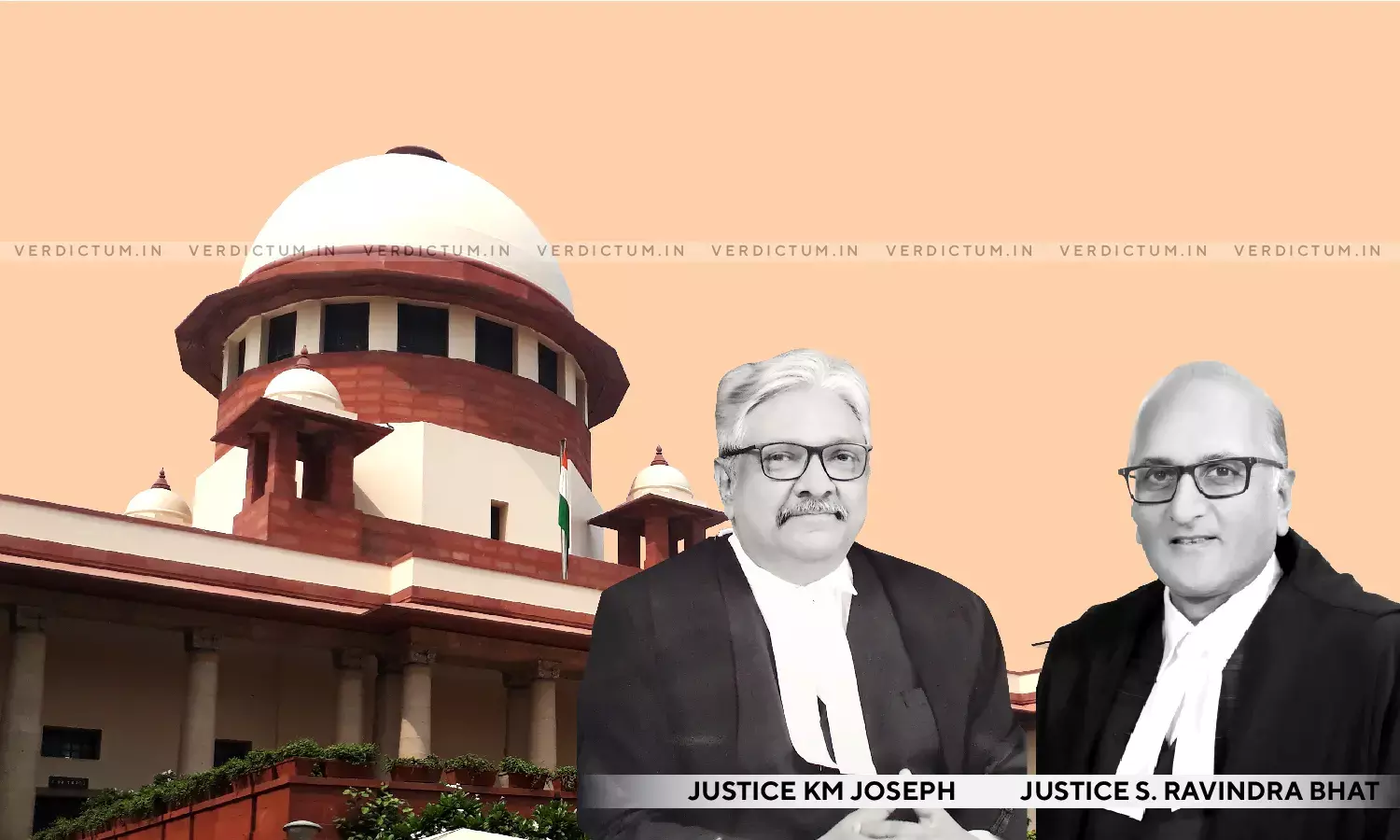Supreme Court Explains The Distinction Between 'Culpable Homicide' And 'Murder'
A two-judge Bench of Justice KM Joseph and Justice S. Ravindra Bhat has explained the distinction between 'culpable homicide' under Section 304 of the Indian Penal Code and 'Murder' under Section 302, in a case where the Court altered conviction of a person convicted under Section 302 to conviction under Section 304 of the IPC.
Appeal was preferred before the Supreme Court against the Judgment passed by the Madhya Pradesh High Court which had upheld the conviction of the accused under Section 302 IPC by the Trial Court, sentencing the Appellant-Accused to life imprisonment.
In this case, a Sub-Inspector of Police intercepted a truck driven by the Appellant that was involved in a previous incident. When the Sub-Inspector motioned the truck to stop, the Appellant tried to speed away. When Sub-Inspector boarded the truck, he was pushed away by the Appellant with a threaten that he would be killed. As a result, the Sub-Inspector fell off the truck and was run over by the truck and died.
The Appellant argued before the Court that the evidence and the testimony of the Prosecution witnesses contained fatal contradictions and exaggerations. It was specifically contended by the Appellant that depositions of two witnesses contained several improvements to the original statements given by them, as recorded during the course of investigations.
Also, the Appellant asserted that the depositions of the eyewitnesses were suspicious because they spoke in unison about the incident identical to the deposition of the prime witness. The counsel appearing for the Appellant contended about the improbability of four persons observing an incident in the same manner, although they were located at different points or places but the painting the same picture.
The Respondent prosecution pleaded not to interfere with the findings of both the Trial Court and High Court and argued that both the Courts have carefully weighed the evidence before holding the Appellant liable for murder. The counsel for the prosecution contended that it had established the intention to kill, beyond reasonable doubt.
After analyzing the sequence of events that led to the death of the deceased, the Court observed, "The question of whether in a given case, a homicide is murder, punishable under Section 302 IPC, or culpable homicide, of either description punishable under Section 304 IPC has engaged the attention of courts in this country for over one and a half century, since the enactment of the IPC; a welter of case law, on this aspect exists, including perhaps several hundred rulings by this court. The use of the term "likely" in several places in respect of culpable homicide, highlights the element of uncertainty that the act of the accused may or may not have killed the person. Section 300 IPC which defines murder, however refrains from the use of the term likely, which reveals absence of ambiguity left on behalf of the accused. The accused is for sure that his act will definitely cause death. It is often difficult to distinguish between culpable homicide and murder as both involve death. Yet, there is a subtle distinction of intention and knowledge involved in both the crimes. This difference lies in the degree of the act. There is a very wide variance of degree of intention and knowledge among both the crimes."
The Court opined that even if the prosecution version of the events which took place is relied upon and it is accepted that the Appellant threatened to kill the deceased, one cannot set much store by it, because no motive or no animus against the deceased was proved. The Court held that a general expression of extreme threat cannot be given too much weight.
All the essential elements show that the appellant did not have any previous quarrel with the deceased; there was lack of animus. The act resulting in SI Tiwari's death was not pre-meditated, the Bench noted.
The Court found that the prosecution could not prove that the Appellant, with deliberate intent, drove over the deceased and he knew that the deceased would have fallen inside, so that the truck's rear tyre would have gone over him. The Court, however, found that it can be inferred that the Appellant intended to cause such bodily injury as was likely to cause the Sub-Inspector's death.
Accordingly, the Court held that the conviction of the Appellant under section 302 was not appropriate and ruled that the Appellant should be convicted under part I of Section 304 IPC and allowed the Appeal reducing the sentence from rigorous imprisonment for life to rigorous imprisonment for ten years.




